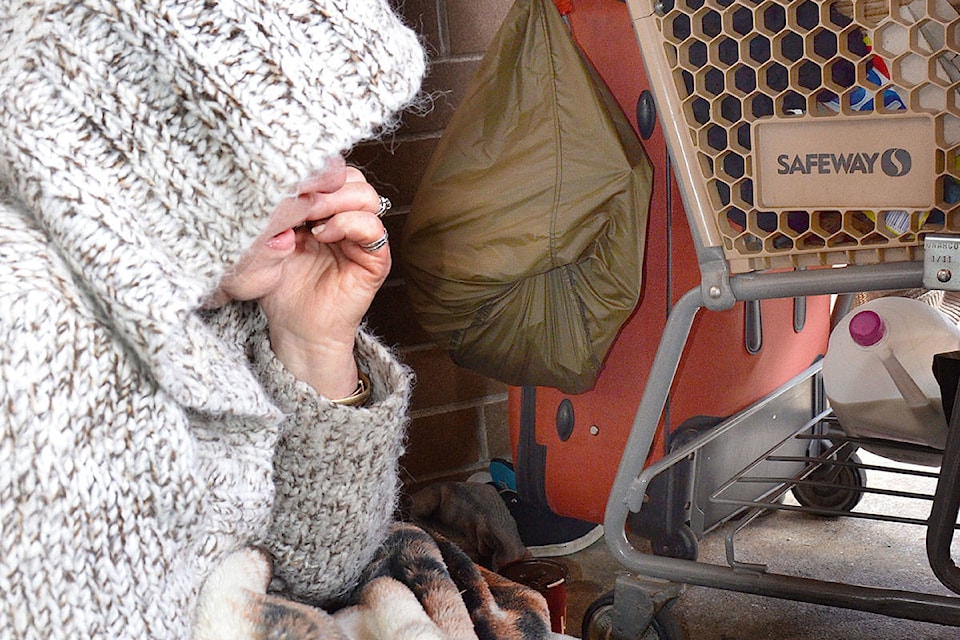Social distancing, hand washing and following public health guidelines are all hard, but are infinitely more difficult for those experiencing homelessness.
Sue Moen is the Supportive Housing Services Manager at Evergreen House Emergency Shelter and part of the Campbell River and District Coalition to end Homelessness. She has been working with people experiencing homelessness in the city, and has seen the daily struggles that they are going through.
She said that these people have been affected “horrendously, as you can imagine,” adding that “it’s nigh on impossible for people who are already experiencing homelessness, are disadvantaged and have limited access to resources to begin with, now that everything has closed.”
People who experience homelessness are dealing with even more stigma than usual due to their lack of ability to follow public health guidelines. The people Moen works with usually spend their time in with their friends and people who are close, but have been forced to be apart from each other, which makes it even more difficult to cope with the crisis.
Typically, 22 people can sleep at the Evergreen House Emergency Shelter where Moen works. Due to the COVID-19 restrictions, that number has been decreased, but only by two beds. Those 20 guests are able to find a place to stay through the crisis, and to have a sense of normalcy, Moen explained.
“We’ve set aside rooms as isolation rooms should the pandemic affect anyone in the shelter. We have a good pandemic plan and we are able to deal with that. We’ve created a sense of community here. We treat each other as a family group as opposed to a bunch of strangers who have to be very far apart,” she said. “There’s anxiety, fear, but we’re doing some things together like planting a food garden and trying to provide some extra services that we would not normally provide in an effort to help people follow the public health guidelines.”
Those 20 people are only a small number of the people who are facing these kinds of challenges in the city. Though the regularly scheduled Homelessness Point in Time count was postponed for 2020, the last available data (from 2018) shows that 81 people in the city were identified as experiencing homelessness in some way. Though they do not have hard numbers at this time, Moen and other agency representatives have seen the population grow over the past few years.
“Anecdotally and looking at individual agency stats, we think it has grown. We know at a gut level for even the last count that there were a lot of different specific populations who were under-represented,” she said.
The coalition is still working on its advocacy and communication efforts, especially with added stresses on vulnerable populations. One group that Moen and her colleagues have their eye on is the people who were displaced in the April 8 fire on Dogwood Street and 9 Avenue. They are working to ensure those people do not end up homeless after the emergency support runs out.
“We as a coalition have offered our services to help coordinate the response to that population along with offering the city a plan for emergency temporary shelter for the people who are already experiencing homelessness.”
Part of the coalition’s mandate is to provide a unified voice to help coordinate supports in the city and outlying communities. While Moen appreciates the help that various community members have offered in the last few weeks, she and the coalition are working to present a streamlined effort to help people respond in a meaningful way.
“Even the supports that are there, because of the way that services are having to be delivered, it’s dehumanizing. They can’t go to places where they used to go and be able to have a meal. They’re getting bags handed to them out of a door,” she said.
“There has been a lot of generous community response including food hampers, getting together and helping people that are out of work or facing extra bills because of the pandemic. Those services and that support isn’t accessible to people who are experiencing homelessness,” Moen added. “There’s no place to deliver a food hamper, there’s nowhere to cook the food that’s in the hamper.”
The best way to be a part of a solution, she suggested, was to ask city council to take on a leadership role to help with the problem of homelessness in the city, especially during the pandemic.
Until then, she and the people she works with will continue “facing every day as a day that we have never experienced before. It is another layer of uncertainty on our guests’ lives. It’s wearing and it’s tiring, but we’re very grateful.”
RELATED: Northern B.C. town builds camp on outskirt of town for homeless population
City of Campbell River opening more public washrooms
marc.kitteringham@campbellrivermirror.com
Like us on Facebook and follow us on Twitter
